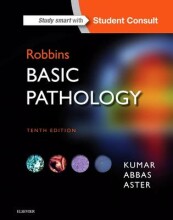Inflammation and repair - Mediators of inflammation
15 important questions on Inflammation and repair - Mediators of inflammation
Which cell types produce mediators of acute inflammation?
tissue macrophages, dendritic cells, and mast cells,
platelets, neutrophils, endothelial cells, and most epithelia
When are mediators produced?
in response to various molecules that stimulate inflammation e.g. Microbial products
Wat zijn de arachidonic acid metabolites?
Ontstaan dus uit de celmembraan.
En worden gemaakt via cyclooxygenase en 5-lipoxygenase.
- Higher grades + faster learning
- Never study anything twice
- 100% sure, 100% understanding
Histamine and serotonin are one of the first mediators to be released during inflammation and are responsible for vasodilation. When is it released?
(1) physical injury, such as trauma, cold, or heat, by unknown mechanisms
(2) binding of antibodies to mast cells, which underlies immediate hypersensitivity (allergic) reactions
(3) products of complement called anaphylatoxins (C3a and C5a)
Prostaglandins and leukotrienes stimulate vascular and cellular
reactions in acute inflammation. What is another name for these mediators
Prostaglandins are generated by the actions of cyclooxygenases. What are they called and when are they produced
- COX-1
- response to inflammatory stimuli and also is constitutively expressed in most tissues, where it may serve a homeostatic function
- COX-2
- induced by inflammatory stimuli and thus generates the PGs that are involved in inflammatory reactions, but it is low or absent in most normal tissues.
What are the most important Prostaglandins in inflammation?
- Prostacyclin PGI2
- vasodilation and increases the permeability of postcapillary venules
- Thromboxane A2 TXA2
- Promotes thrombosis
- Prostacyclin
- is a vasodilator
- prevent thrombus formation
- PGE2
- makes the skin hypersensitive to painful stimuli, and causes fever during infections
Name a pharmacologic prostaglandins inhibitor
TNF and IL-1 serve critical roles in leukocyte recruitment. Name such role
What is an effective treatment in chronic inflammatory disease?
e.g. In rheumatoid arthritis
What is the exact function of chemokines in Acute inflammation?
leukocyte attachment to endothelium by acting on leukocytes
to increase the affinity of integrins. They also serve as chemoattractants, thereby guiding leukocytes to sites of infection or tissue damage.
What is the function of C5a
- Stimulate histamine release from mast cells (which thereby increase vascular permeability and cause vasodilation)
- Chemoattractants for neutrophils, monocytes, eosinophils, and basophils
- activates the lipoxygenase pathway (formation of Leukotriene)
What is the funtion of C3b
It acts as opsonins and promotes phagocytosis by neutrophils and macrophages
What is the function of MAC (also complement)
How are complement proteins activated and what is their function in general?
Activation by microbes or antibodies leads to the generation of multiple breakdown products, which are responsible for leukocyte chemotaxis, opsonization and phagocytosis of microbes and other particles, and cell killing
The question on the page originate from the summary of the following study material:
- A unique study and practice tool
- Never study anything twice again
- Get the grades you hope for
- 100% sure, 100% understanding
































